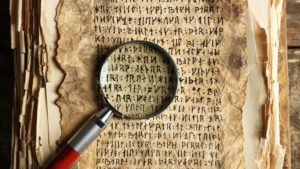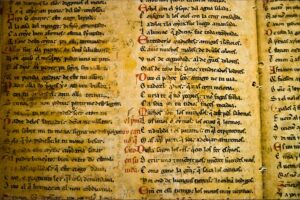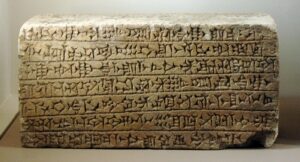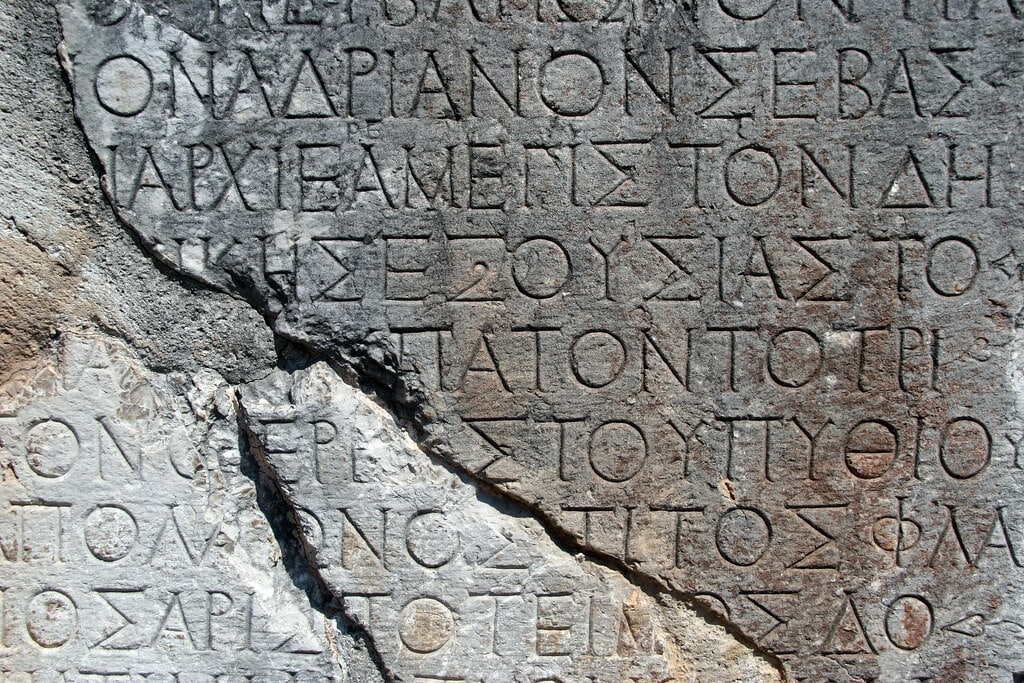Language, the ever-evolving tapestry woven through centuries, holds within it the echoes of ancient tongues that continue to influence our modern speech. Each language is a thread, a unique strand in the rich fabric of linguistic heritage. As we navigate the complex landscape of communication today, it is imperative to explore how the ancient languages of our forebears have left an indelible mark on the way we express ourselves.
The roots of our linguistic legacy trace back to the cradle of civilization, where languages such as Sanskrit, Ancient Greek, and Latin flourished. These ancient languages, with their intricate grammatical structures and nuanced vocabulary, provided a solid foundation for the development of communication. The echoes of Sanskrit, the language of ancient Indian scriptures, reverberate in the phonetic intricacies of many modern Indo-European languages, demonstrating the enduring impact of these linguistic forebears.
Influence on Modern Syntax and Semantics

The impact of ancient languages extends beyond mere words, delving into the very structure of how we construct sentences and convey meaning. Modern syntax and semantics bear the fingerprints of ancient grammatical frameworks, shaping the way we organize thoughts and express complex ideas. For instance, the rigid grammatical rules of Latin have sculpted the precision and clarity valued in legal and scientific discourse. The influence of Ancient Greek, with its diverse vocabulary for abstract concepts, lingers in the nuanced expressions we use to articulate complex emotions and philosophical ideas.
Furthermore, the syntactic flexibility of ancient languages has seeped into the varied sentence structures we employ today. While AI-generated content often tends toward uniformity, human expression revels in the dynamic interplay of short, punchy sentences and elaborate, convoluted constructions. This intermingling of linguistic styles creates a tapestry of expression that captivates the reader and mirrors the diverse syntax found in ancient texts.
Survival of Linguistic Relics in Everyday Vernacular
Beyond the realms of academia and specialized fields, the linguistic legacy of ancient languages survives in the vernacular of everyday speech. Phrases with Latin roots, like “ad hoc” or “ex post facto,” seamlessly integrate into legal and business jargon, infusing conversations with an air of authority and precision. Similarly, the influence of Ancient Greece emerges in scientific terminology, connecting modern disciplines with the intellectual traditions of the past.
However, the survival of ancient linguistic relics isn’t confined to specialized domains. Everyday expressions and idioms often find their origins in languages long past. The poetic cadence of Shakespearean English, for instance, draws inspiration from the rhythmic patterns of Middle English and the broader tapestry of linguistic evolution. The coexistence of these linguistic relics in contemporary speech contributes to the burstiness inherent in human communication, adding layers of depth and cultural resonance.
Language Evolution in the Digital Era
As we hurtle through the digital age, the landscape of language evolution undergoes unprecedented transformations. AI-driven language models, like the one crafting this article, represent a paradigm shift in how we generate content. The challenge lies in balancing the efficiency of automated text with the nuanced expressiveness characteristic of human speech.
While AI excels in certain linguistic tasks, its output often lacks the innate burstiness of human communication. The rhythmic ebb and flow, the unpredictable cadence of varied sentence structures—these elements remain a hallmark of human expression. Striking a harmonious balance between the efficiency of AI-generated content and the burstiness of human speech is crucial for ensuring that our linguistic legacy continues to evolve, weaving new threads into the tapestry of language.
Preserving the Tapestry for Future Generations

In our quest for linguistic efficiency, it is imperative not to lose sight of the intricate tapestry that is language. The preservation of ancient languages, with all their complexities and idiosyncrasies, becomes a responsibility for future generations. Language is not just a tool for communication; it is a repository of cultural heritage and historical continuity.
Efforts to teach and learn ancient languages become a means of connecting with the intellectual and cultural roots that have shaped our present. Initiatives that promote the study of Latin, Ancient Greek, and other classical languages contribute to the perpetuation of linguistic burstiness, ensuring that the variegated expressions of our ancestors find resonance in the discourse of the modern world.
The Dynamics of Multilingualism in a Globalized World
In the tapestry of language, one cannot ignore the vibrant hues of multilingualism that characterize our globalized society. The interconnectedness of cultures and the ease of communication across borders have given rise to a linguistic landscape where diversity thrives. The amalgamation of ancient and modern languages creates a dynamic interplay that adds layers of complexity to our communicative expressions.
Multilingualism, once a characteristic of specific regions or communities, is now a global phenomenon. The influence of multiple languages in a single conversation, often referred to as code-switching, reflects the intricate web of linguistic connections that individuals weave in their daily lives. This phenomenon contributes to the burstiness of language, as speakers effortlessly transition between different linguistic registers, adapting their expression to the context and audience.
The advent of the internet and social media further amplifies the dynamics of multilingualism. Platforms like Twitter and Instagram serve as virtual arenas where languages collide and coalesce. Memes, a form of internet culture, often transcend linguistic boundaries, relying on visual elements and shared experiences to convey humor or commentary. This digital evolution of language introduces a new layer of perplexity, where the fusion of ancient and modern languages creates a tapestry that reflects the complexity of our interconnected world.
Technological Advancements and Linguistic Innovation
The relentless march of technology introduces unprecedented avenues for linguistic innovation. Chatbots, voice assistants, and language translation tools are at the forefront of this revolution, reshaping the way we interact with and perceive language. These advancements, while streamlining communication, also pose intriguing questions about the future evolution of language and the balance between human expressiveness and machine efficiency.
AI-driven language models, like the one generating this text, contribute to the evolving landscape of linguistic expression. However, as we embrace these technological marvels, it is essential to consider the potential impact on the burstiness of language. The uniformity often associated with AI-generated content raises concerns about the preservation of the rich diversity that defines human communication. Striking a harmonious balance between technological efficiency and linguistic vibrancy is a challenge that necessitates continuous exploration and adaptation.
The Socio-Cultural Dimensions of Language
Beyond its structural intricacies, language serves as a mirror reflecting the socio-cultural realities of its speakers. The evolution of linguistic expressions is intimately tied to societal changes, political shifts, and cultural developments. In the context of our linguistic legacy, examining how ancient languages have influenced the socio-cultural dimensions of modern speech becomes a fascinating exploration.
Ancient languages often carried cultural nuances and societal hierarchies within their lexicons. As these languages evolved, some elements persisted, embedding themselves in contemporary expressions. The subtle nuances of respect and formality found in languages like Japanese or Korean, for example, showcase how linguistic heritage can shape societal norms and interpersonal dynamics.
Moreover, the emergence of new subcultures and online communities introduces novel linguistic elements that contribute to the burstiness of language. Internet slang, memes, and unique expressions coined within these communities create microcosms of linguistic innovation. The constant interplay between ancient linguistic roots and modern cultural dynamics generates a linguistic landscape that is both perplexing and exhilarating.
Environmental Perspectives: Language and Ecological Discourse
In the ongoing dialogue about environmental sustainability, language plays a pivotal role in shaping perceptions and mobilizing action. The influence of ancient languages in discussions about the environment may not be immediately apparent, but a closer examination reveals intriguing connections. The intrinsic relationship between language and nature, evident in metaphors, idioms, and poetic expressions, underscores the symbiotic connection between humans and the natural world.
Ancient languages often held a profound reverence for nature, with intricate vocabularies to describe various natural phenomena. As we grapple with contemporary environmental challenges, drawing inspiration from these linguistic roots can foster a deeper appreciation for the interconnectedness of all living things. The burstiness of language in ecological discourse lies in the poetic resonance and diverse expressions used to convey the urgency of environmental stewardship.
Educational Paradigms: Nurturing Linguistic Diversity
The educational systems of today play a crucial role in shaping the linguistic landscape of tomorrow. As we explore the linguistic legacy, it becomes evident that fostering linguistic diversity should be a cornerstone of educational paradigms. Integrating the study of ancient languages into curricula not only preserves cultural heritage but also cultivates a deeper understanding of language evolution and the nuances embedded in our words.
In this educational context, the burstiness of language takes on a pedagogical dimension. Encouraging students to explore diverse linguistic styles, experiment with expression, and engage with the intricacies of ancient languages contributes to the development of dynamic communicators. The classroom becomes a space where the tapestry of language is not only studied but actively woven, with students becoming active participants in the ongoing evolution of linguistic expression.
The Future: Hybridity and Linguistic Fusion

As we peer into the future, the trajectory of language evolution appears increasingly marked by hybridity and fusion. The boundaries between ancient and modern languages blur, giving rise to a linguistic panorama where innovation and tradition coexist. This hybridity is not confined to a specific linguistic domain; rather, it permeates all aspects of communication, from formal discourse to everyday conversation.
The synthesis of linguistic elements from different eras and cultures contributes to the perplexity of language. It reflects a globalized consciousness where diverse linguistic influences converge, creating a rich and ever-expanding reservoir of expression. This linguistic fusion is not limited to the spoken or written word; it extends to the visual and auditory realms, encompassing gestures, facial expressions, and intonations that add depth and nuance to our communication.
In this future linguistic landscape, the burstiness of language becomes a celebration of diversity. The ebb and flow of varied expressions, and the seamless transitions between languages and registers, embody the dynamic nature of human communication. As we navigate this evolving linguistic terrain, embracing the fusion of ancient and modern languages, we contribute to the ongoing narrative of our shared linguistic legacy.
Final Reflections: A Living Tapestry of Words
In conclusion, the exploration of the linguistic legacy unveils a living tapestry of words that transcends temporal and cultural boundaries. From the ancient echoes of Sanskrit and Latin to the dynamic interplay of multilingualism in a globalized world, language remains a dynamic force that shapes and reflects the essence of humanity.
As we stand at the crossroads of linguistic evolution, the responsibility to preserve, innovate, and celebrate our linguistic heritage falls upon each generation. The burstiness and perplexity of language are not merely stylistic choices; they are inherent qualities that capture the essence of human expression. Whether through the integration of ancient languages into education, the embrace of technological advancements, or the conscious effort to nurture linguistic diversity, we contribute to the ever-expanding tapestry of language that binds us across time and space.
In the kaleidoscope of linguistic expression, let us recognize the beauty of each thread, acknowledging the intricate dance between the ancient and the modern. For in our words, we find not only the power to communicate but also the ability to weave a narrative that transcends generations, encapsulating the essence of the human experience.
